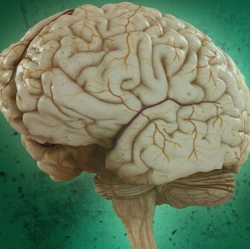
Paralyzed from the chest down, Ian Burkhart has been able to use his fingers for the first time in 6 years after a chip was inserted in his brain. A chip reads brain signals, which are interpreted by a computer. It then stimulates his muscles with electricity to restore movement. Researchers hope the technology will eventually help millions of people.
Ian, 24, was seriously injured in a diving accident nearly six years ago. The damage to his spinal cord left messages from his brain unable to reach the rest of his body and he was paralysed below the elbows and left unable to walk.
But now he is celebrating the "big shock" of being able to move his hand again after a procedure at Ohio State University. A sensor was implanted inside his brain to read the activity of hundreds of neurons in his motor cortex.
It then took hours of practice to teach a sophisticated computer program how to understand the myriad signals in his brain.
Ian also wore a stimulating sleeve with 130 electrodes primed to stimulate and contract different muscles in his right arm.
The results, published in the journal Nature, showed he can grasp and move large objects, pour the contents of a glass and even swipe a credit card.
Ian described the early sessions as like seven-hour exams that left him "completely and mentally fatigued and exhausted".
"You really have to break down each part of that motion and think about it in a more concentrated way. For the first 19 years of my life it was something I definitely took for granted."
However, with practice he is learning new movements more quickly. Ian is now dreaming of regaining the full function of both his hands as "that allows you to be a lot more independent and not have to rely on people for simple day-to-day tasks".
The study marks a significant moment in the field of using computers to bypass spinal cord injuries.
